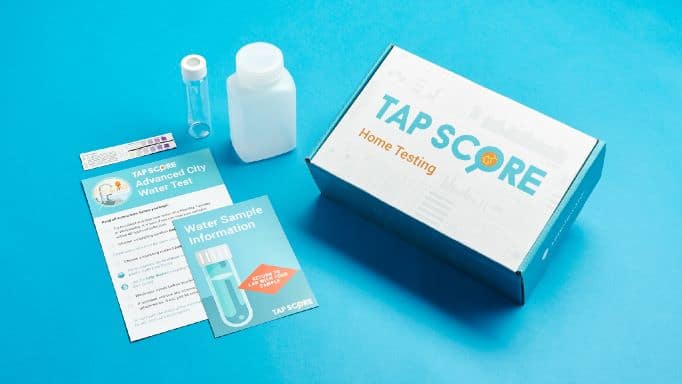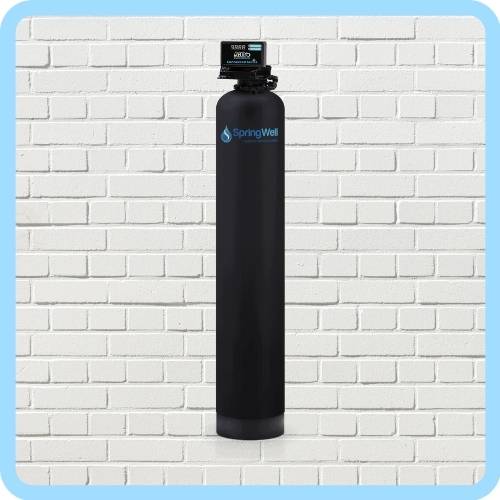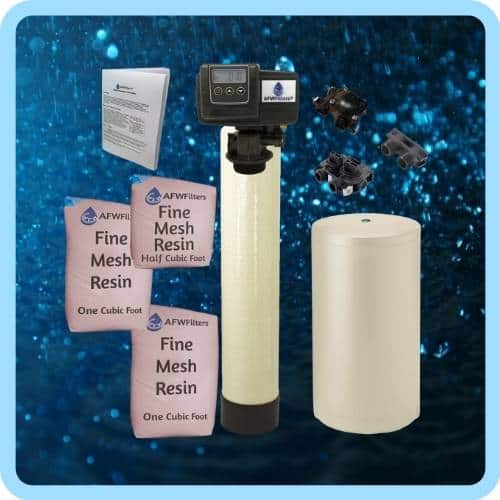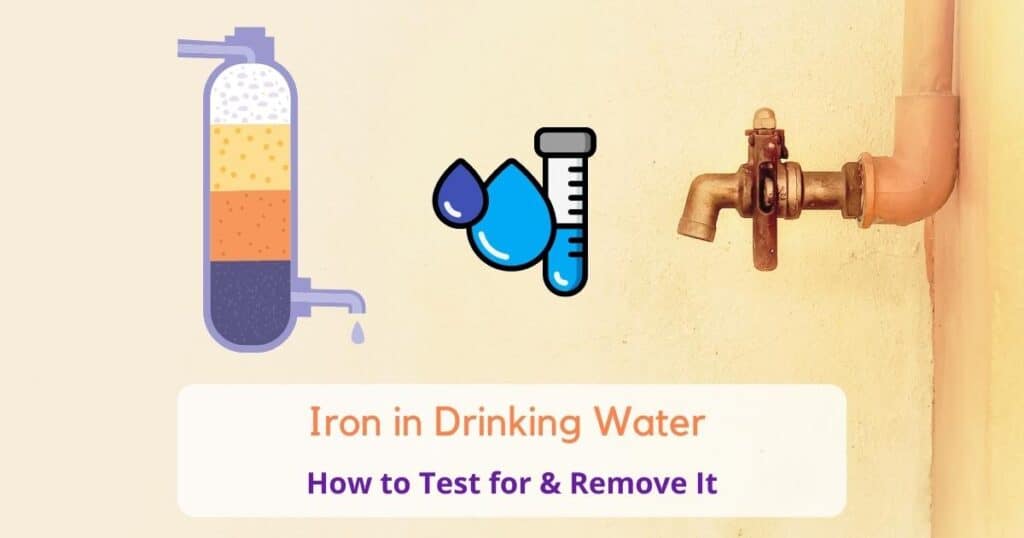
Did you know that iron is essential for human life? It’s one of the minerals our bodies need to function correctly. But too much iron can be a bad thing, and it’s important to know how to test for it and remove it from our drinking water.
This article will cover everything you need to know about iron in drinking water, including the benefits and dangers of iron and the maximum safe limits.
We’ll also explain how TapScore’s Iron Water Test is the best way to ensure iron is the problem and then recommend a couple of iron filters you can use to remedy it.

What is iron?
We often think of the metal used to construct bridges when talking about iron. There’s also the iron found in our food in the form of hemoglobin, which gives our blood its red color.

But what exactly is iron?
Iron is a chemical element with the symbol Fe (from Latin: Ferrum) and atomic number 26 [1]. It is a metal in the first transition series. It is by mass the most common element on Earth, forming much of Earth’s outer and inner core.
But in the context of water, we’re talking about a different kind of iron: dissolved iron.
Dissolved iron
Dissolved iron is a natural contaminant found in water supplies. While most iron is in the form of ferric iron (Fe3+), which is not very soluble, some of it may be present as ferrous iron (Fe2+) [2].
Ferric Iron (Fe3+)
The oxidized or ferric form of iron is insoluble in water and often appears as red-brown rust in drinking water. You may have noticed it as dark red stains in your toilet bowl, sink, or tub. Insoluble ferric iron is not in itself a health concern. Sometimes people mistake it for black sediment or black sand-like debris.
Ferrous Iron (Fe2+)
Ferrous iron is soluble in water and is usually a clear solution without color. When oxygen is present, ferrous iron oxidizes to become ferric and forms the reddish-brown rust I mentioned earlier.
Iron bacteria
Iron bacteria are microorganisms that use dissolved iron as an energy source. They convert the ferrous iron to ferric, which then precipitates out of the solution and forms reddish-brown slime. They are generally not harmful, though they may produce a pungent stench and a nasty taste [3].
How does iron get into a drinking water supply?
Iron can come from natural sources like groundwater and minerals in the earth. It can also enter supply systems by leaching (washing) natural deposits on buried piping or discharging from storm sewers.

It’s common for houses with a well to find iron in their water. Well depth can have an impact on this, with shallow wells being more likely to have organic iron [3a]
When iron corrodes pipes, it can also get into the drinking water supply. So you may notice a rusty color in your tap water, especially if the pipes in your home are old.

Benefits of iron in drinking water
While too much iron in drinking water can be dangerous, a small amount of iron is essential for human health.
This small amount of iron helps:
- prevent anemia [4a];
- transport oxygen in the blood [4b];
- aid in cell growth [4c];
- regulate body temperature [4d];
- and support the immune system [4e].
Iron is an essential part of hemoglobin, the substance in red blood cells that carries oxygen from our lungs to the rest of our body. Oxygen is necessary for all the cells in our body, and without enough iron, they would not be able to function.
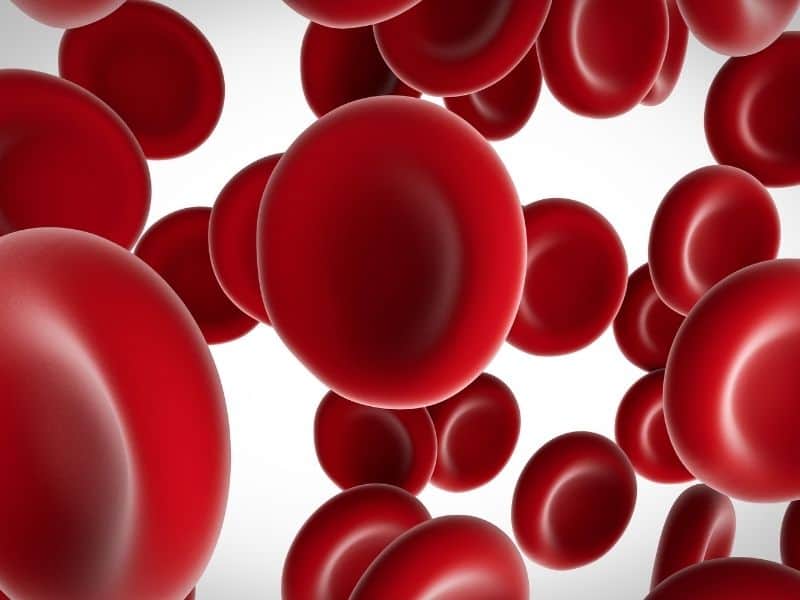
A lack of iron minerals can lead to anemia, where the body does not have enough healthy red blood cells. Anemia can cause fatigue, weakness, and other symptoms.
Negatives of excessive iron in drinking water
Let’s explore the adverse effects of iron on your health, skin, and hair. Then look at what happens to the taste of your water and the impact on your fixtures and fittings.
Excess iron in water is unlikely to cause serious health problems
While a small amount of iron is essential for human health, it’s also true that you can overdose on it. Fortunately, iron poisoning is not likely to be caused by diet or drinking water with too much iron as the concentration in food or water is too low.
The most likely culprit of iron poisoning is an accidental overdose of iron supplements [5].
A study in India found that drinking water with high iron levels caused iron accumulation in the skin and nails [5a]. While no negative health impact has been proven, the authors suggest more investigation is needed.
Effects on skin & hair
While many other sites report that iron can harm the skin or hair, we didn’t find any solid scientific evidence to support this.
However, excess iron in drinking water may cause the discoloration of teeth. In the long term, iron in the water may stain the teeth a dark brown or black color [6].
If you notice any of these symptoms, you should see a doctor as soon as possible. We also recommend getting a water test to determine what’s causing your problem.
Drinking water taste, smell & appearance
In addition to causing health problems, excessive iron in tap water can also affect your water’s taste, appearance, and smell.
Water with high levels of iron often has an unpleasant metallic taste (copper in drinking water can also cause this). It may also appear reddish-brown or yellow or have a foul odor – which isn’t appetizing to drink or shower in.
Stains on appliances and fixtures
Excessive iron in water can also stain plumbing fixtures like toilets, sinks, and tubs. These stains are caused by iron sediment, which builds up over time. It’s usually red-brown or yellow and can be difficult to remove.
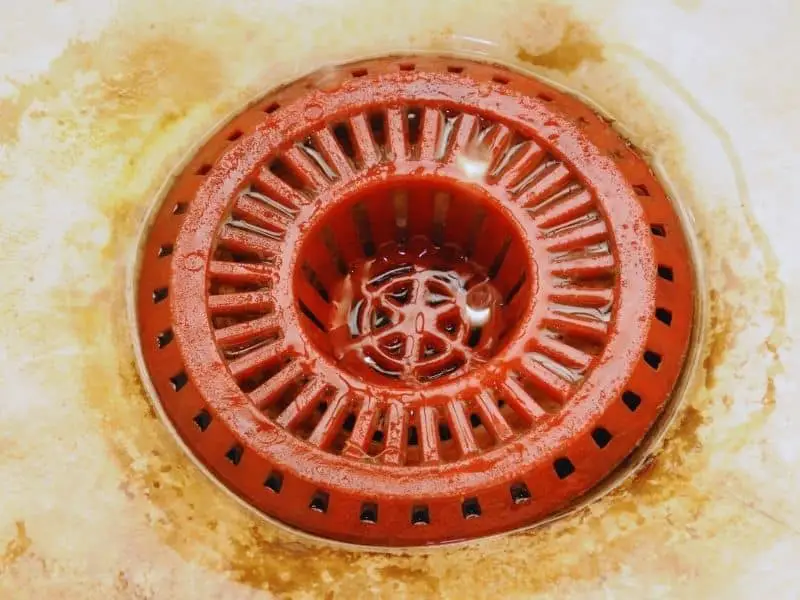
The best way to remove iron stains from plumbing fixtures is by using a commercial stain remover. Simply apply the stain remover to the stain, let it sit for a few minutes, and then rinse it away with water. If this doesn’t work, a professional cleaner may be able to help.
What are the safe limits of iron in water?
The Environmental Protection Agency (EPA) [7] has set the maximum contaminant level goal for iron in drinking water at 0.3 mg/L. This is the level of iron that does not cause any adverse health effects.
If you are on a private well, it’s vital to have your water regularly tested to meet these standards. Consider water filtration and treatment options if it doesn’t.
How to test for iron in water?
Testing is essential to ensure you’re not wasting money on unnecessary water treatment options.
If you notice a metallic taste, bad smell, or red-brow stains on your appliances, you should investigate further.
There are two main ways you can test for iron in your water: with a professional test by a local water quality expert or with a Home Iron Water Test.
A home test will be quicker and cheaper and offer you the same results.
When you receive your test kit in the mail, simply follow the instructions to fill up the sample bottle and then send back your sample.
Tap Score’s Iron Water Test
Recommended for:
- homes with metallic tasting water
- homes with red or orange stains
- homes with red- or orange-colored water
- people in areas where iron water is a concern
How to remove iron from your Water
Removing iron from water is usually done using a filter or a water softener and filter combo.
Best water filters for removing iron
Filtration is the most common method for removing iron from water. Many different types of filters work well. However, the most effective iron filters use oxidizing agents like chlorine. Another good option is a greensand filter which is effective if manganese is present in your water.
Springwell Well Water Filter: Iron Removal Air Injection System
These filters work by converting the soluble form of iron (ferrous) into the insoluble form (ferric). The ferric iron then precipitates out of the water and is trapped by the filter.
Water softeners
Water softeners on their own are not recommended for iron-contaminated water because they can become clogged with iron very quickly, among other common water softener problems. However, they can be very effective when used alongside a filter.

